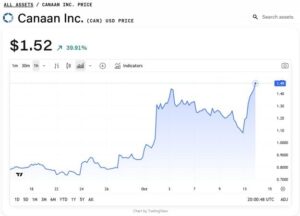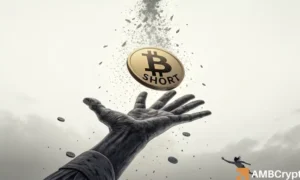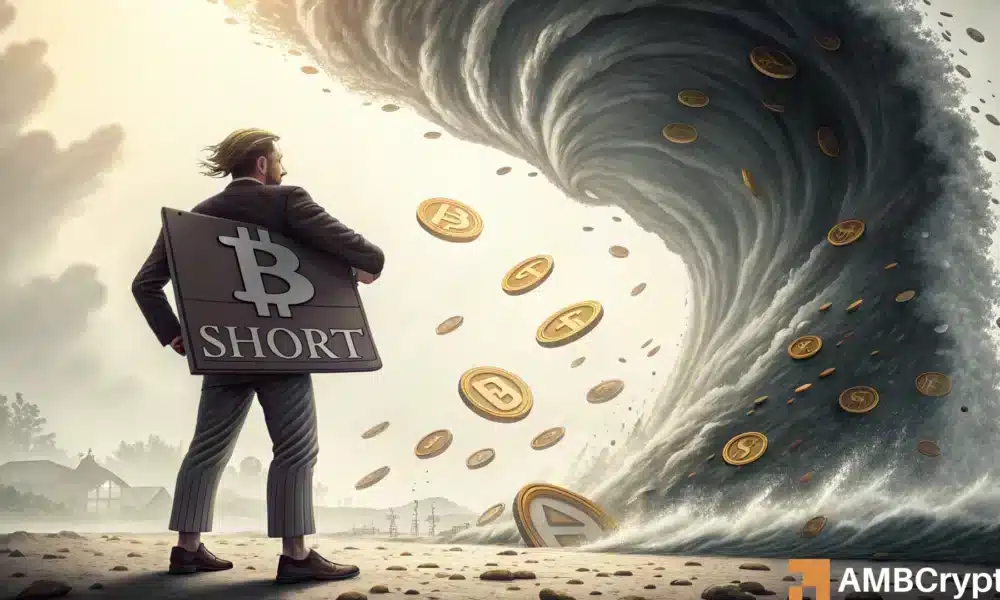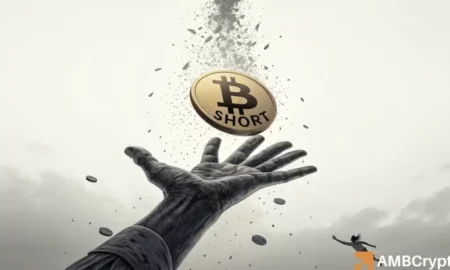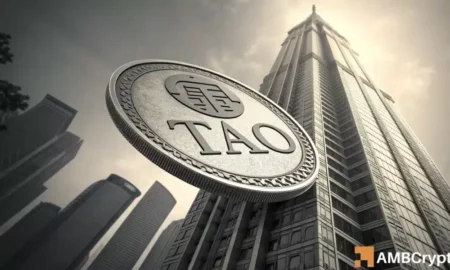The Uncertain Future of Bitcoin: Navigating Institutional Trends and Market Dynamics
Bitcoin (BTC) continues to reign as the most prominent cryptocurrency, yet market conditions are increasingly complex. Recent trends showcase an environment where short bets against BTC are on the rise and institutional involvement is shifting dramatically. This article aims to unpack current market dynamics, the role of institutional flows, and the implications of these factors for those considering shorting Bitcoin.
Rising Short Positions Amidst Strong Demand
As of now, it’s crucial to assess whether it’s too early to bet against Bitcoin. The market has exhibited classic behavior following all-time highs (ATH). After experiencing ATHs of $123,000 and $124,000 in Q3, there were notable pullbacks averaging -1.5%. Recent trading patterns seem to indicate a similar trajectory after hitting a recent peak of $125,000, which represented a long wick before the price dipped to $121,600.
Despite an increase in short positions, approximately 55% of derivatives are currently skewed towards shorting Bitcoin. This marks a 4% uptick from the prior day, suggesting that market sentiment is increasingly leaning towards bearish bets. However, this sentiment raises important questions as the market setup may lead to a potential short squeeze, especially given the recent data on large positions opened by seasoned market players.
The Role of Institutional Investors
Institutional flows are significantly shaping Bitcoin’s market dynamics. A key factor is BlackRock’s IBIT spot ETF, which has attracted a staggering 84% of the $5 billion in inflows this month. This not only marks a stark contrast to the mid-August outflows, which constituted negative sentiment with a record $800 million drawn out, but also positions IBIT as a major catalyst for Bitcoin’s price movements.
The increased inflows into IBIT suggest a strong institutional appetite for Bitcoin, despite prevailing bearish sentiment among traders. This aligns with observations made by financial analysts, who caution that shorting amidst heavy investment inflows is a risky strategy. As institutional demand appears to bolster the market, short positions may become further exposed to sudden surges in prices.
Understanding Recent Market Patterns
Despite the shorting trends, Bitcoin’s resilience remains evident. Early trading weeks post-ATH often involve profit-taking, yet the current price dip to $121,600 indicates that not everyone is inclined to sell off their holdings. Several players, especially those categorized as "smart money," are opening substantial short positions, like the $420 million short initiated by a notable BTC whale at $120,678. Such moves suggest strategic maneuvers that anticipate a potential price correction.
However, it’s crucial to recognize that even with substantial bearish positions, these players may not always succeed. The dynamic nature of Bitcoin trading means that while there is currently unrealized loss on such short positions, market conditions can change rapidly—a factor investors need to keep in mind.
The Risks of Leveraged Shorting
Given the prevailing market conditions, accumulating leveraged short positions poses considerable risks. Recent analysis indicates that aggressive shorting amidst robust institutional support is a precarious approach. The combination of strong bids and high liquidity at key price levels suggests that BTC may have adequate momentum to counteract these short positions.
For instance, there is approximately $120.96 million in short liquidity around $121.8k, illustrating the weight of bearish sentiment. However, with solid support continuing to manifest for Bitcoin, the likelihood of a short squeeze remains a critical scenario for traders focused on short strategies.
Institutional Trends: A Double-Edged Sword
While institutional inflows through Bitcoin ETFs like IBIT can serve as a stabilizing force, they also complicate the narrative for short sellers. The current influx of funds underscores a potential shift in market psychology where traders might become more cautious about aggressively betting against Bitcoin. The implications of such institutional trends are crucial; not only do they signify a vote of confidence in Bitcoin’s long-term value, but they also signal that short positions facing increasing liquidity could be setting up for a potential reversal.
Conclusion: Navigating a Volatile Landscape
In summary, while many traders are betting against Bitcoin in light of classic post-ATH corrections, the influence of institutional participants cannot be overstated. The convergence of shorts and significant inflows into Bitcoin-related products creates a volatile landscape that offers both opportunities and risks. As the dynamics continue to unfold, individuals considering shorting Bitcoin should proceed cautiously. Balancing market trends, institutional flows, and liquidity conditions will be key to navigating this challenging environment. Ultimately, the future of Bitcoin rests not just on its past performance but also on how market participants respond to an evolving landscape.

